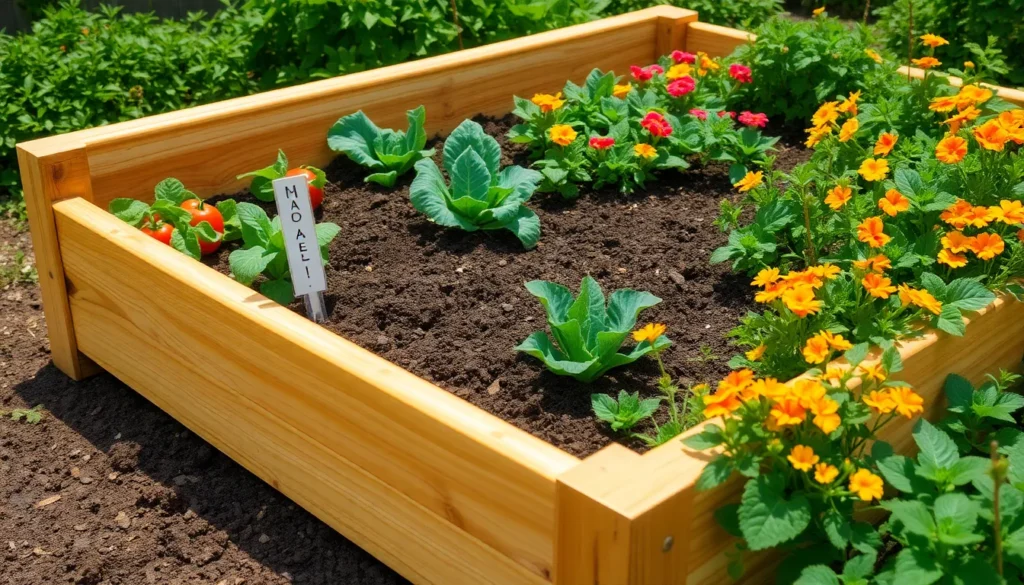Gardening is a journey filled with the joy of nurturing life and the satisfaction of seeing your hard work blossom into vibrant colors and delicious flavors. For both beginners taking their first steps into this green world and seasoned gardeners looking to refine their craft, building a raised garden bed is a transformative experience that enhances any garden space. This guide, “Top 10 Building A Raised Garden Bed,” is your key to unlocking the secrets of efficient, rewarding gardening.
With these expert-selected designs, you’ll discover why raised garden beds are cherished by gardeners everywhere. Not only do they offer a more manageable and organized way to grow plants, but they also improve soil quality and drainage, leading to healthier, more productive gardens. Dive into this guide with confidence, knowing that you’re about to gain practical insights and tips that will elevate your gardening game and bring you closer to the flourishing garden of your dreams.
Cedar Lumber (Durable and Rot-Resistant)
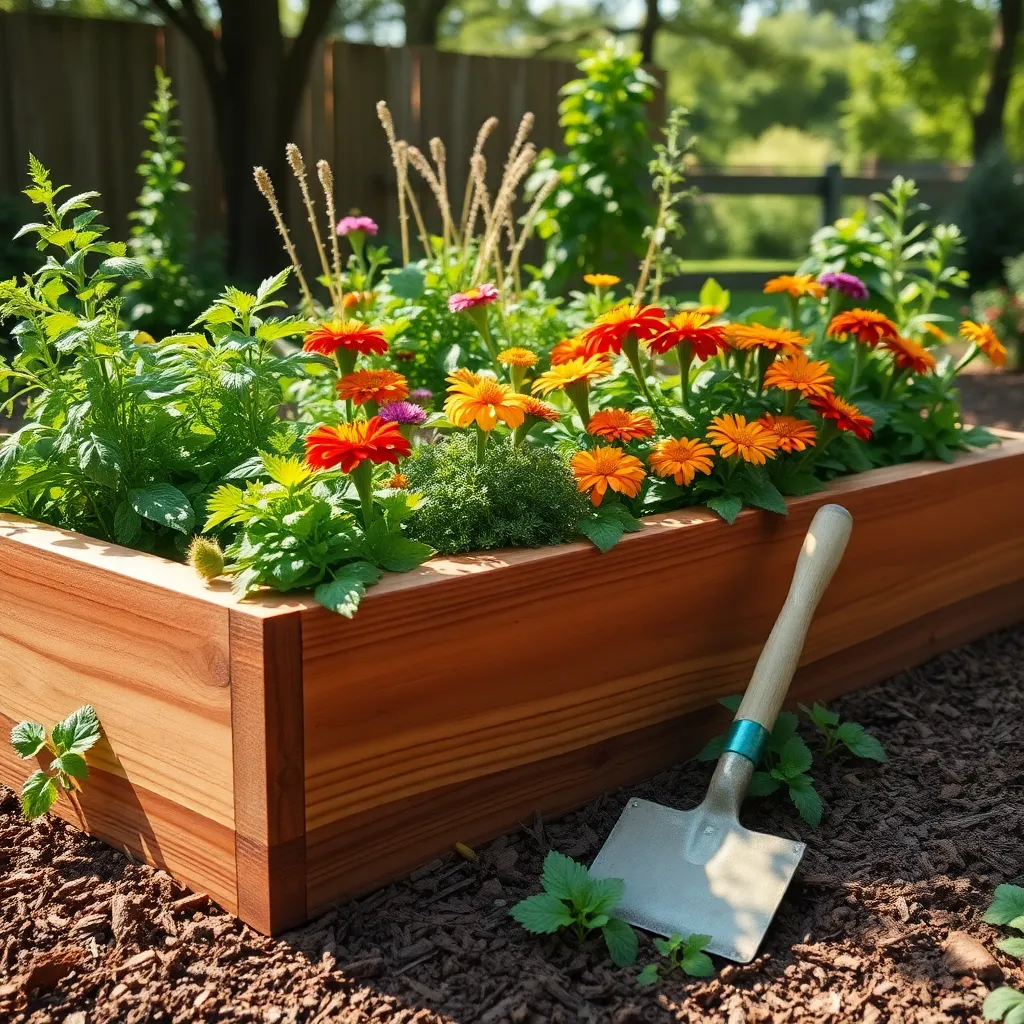
Cedar lumber is a fantastic choice for building raised garden beds due to its natural durability and rot-resistant properties. Unlike other types of wood, cedar contains natural oils that help it withstand the elements and resist insect damage, making it a low-maintenance option for gardeners.
When constructing your raised bed, ensure that the cedar boards are untreated to avoid any chemicals leaching into the soil. This is particularly important if you plan to grow vegetables, as you want to maintain an organic and healthy environment for your plants.
For beginners, using cedar can also mean less time spent on maintenance, allowing you to focus on planting and nurturing your garden. Its longevity means that you won’t have to replace your garden bed frequently, providing a stable environment for perennials and other long-term plantings.
Advanced gardeners will appreciate cedar for its aesthetic appeal, which complements any garden design while offering a robust frame for their plants. Consider enhancing the durability of your cedar bed by lining the interior with landscape fabric to further prevent soil contact with the wood, extending the life of the bed even more.
Galvanized Steel Panels (Long-Lasting Structure)
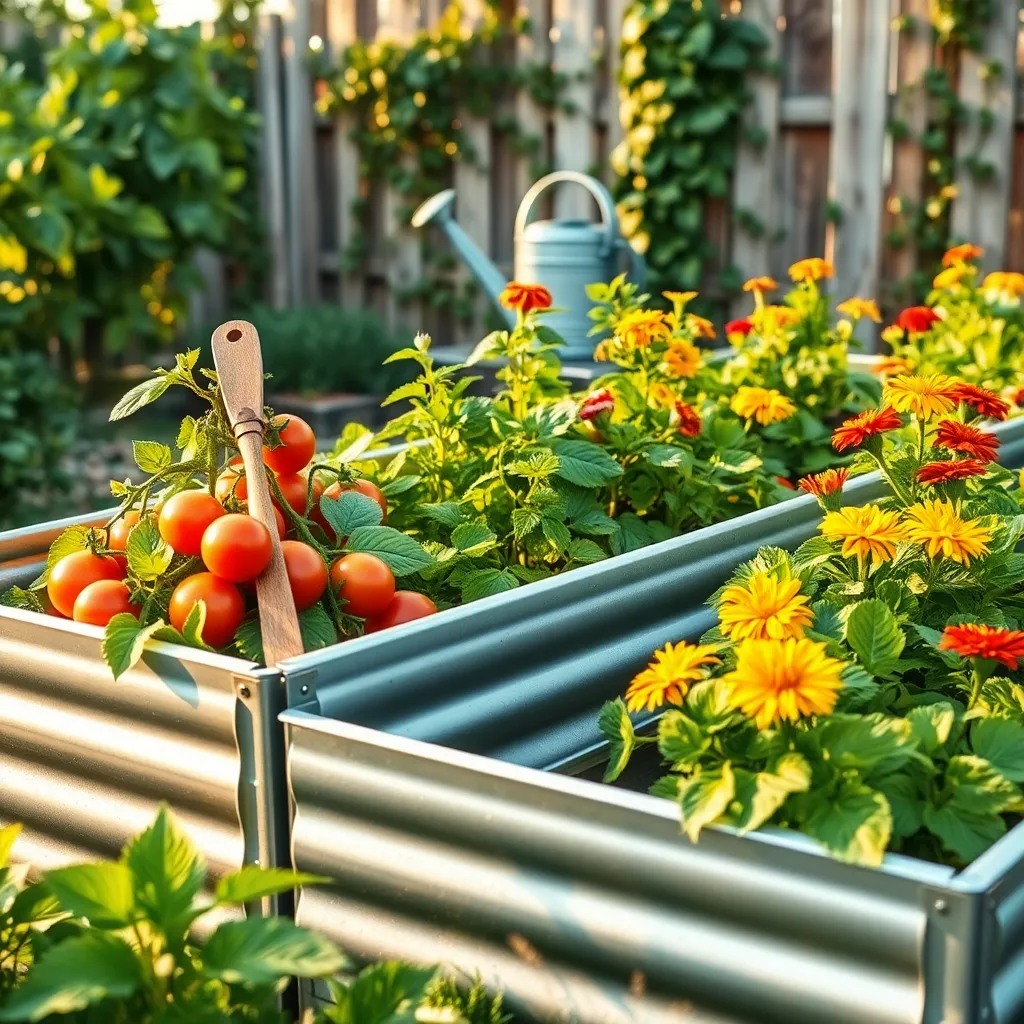
Using galvanized steel panels for building a raised garden bed offers a modern, sleek look along with excellent durability. These panels are resistant to rust and corrosion, making them an ideal choice for long-lasting garden structures.
Galvanized steel panels are not only sturdy but also lightweight, allowing for easy installation and repositioning. To ensure a stable structure, it’s recommended to anchor the panels securely into the ground or onto a wooden frame.
One major benefit of galvanized steel is its ability to withstand harsh weather conditions, reducing the need for frequent maintenance. To maximize the lifespan of your raised bed, ensure proper drainage by incorporating a layer of gravel at the base before adding soil.
For those looking to grow a variety of plants, galvanized steel panels provide the flexibility to create beds of different shapes and sizes. Consider using a soil mix rich in organic matter and well-draining materials, such as peat moss and perlite, to support healthy plant growth.
Organic Compost (Nutrient-Rich Soil Enhancer)
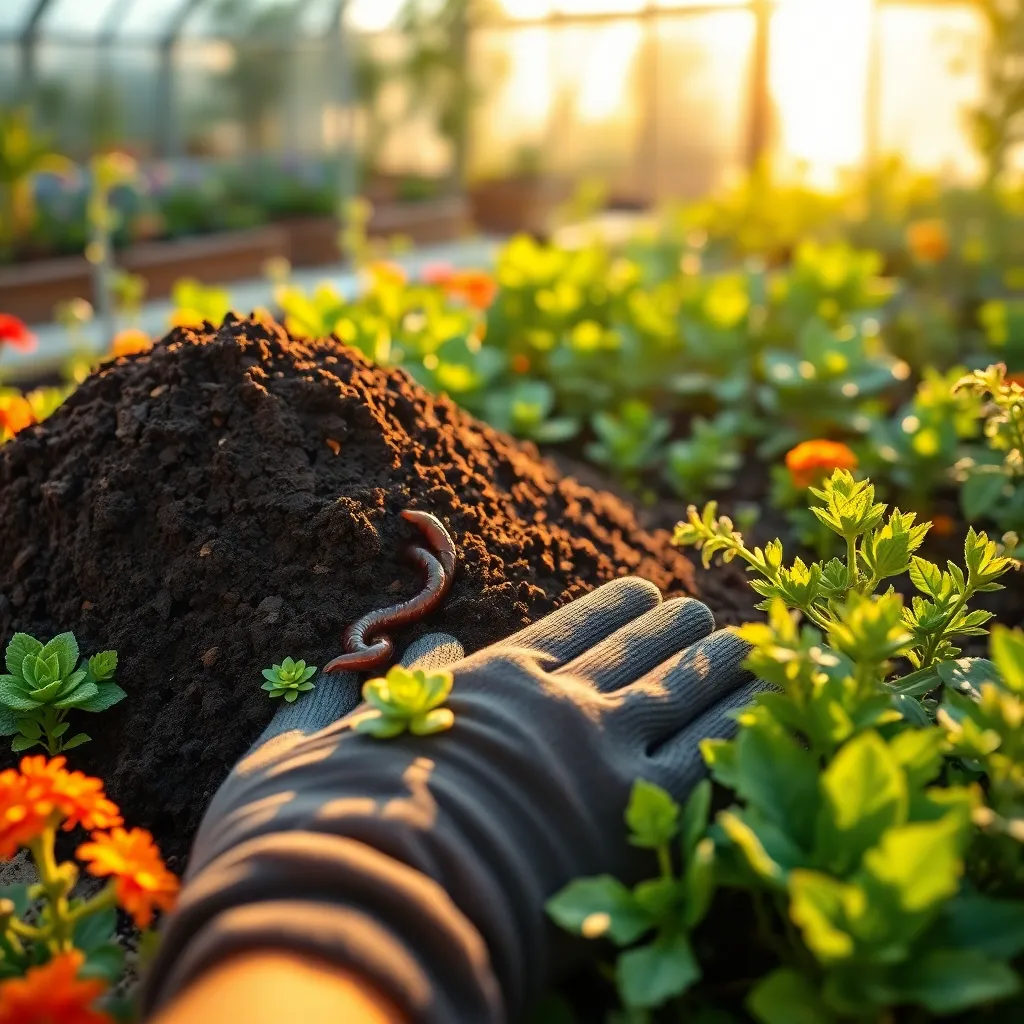
Organic compost is a powerful tool for gardeners looking to enhance their soil’s fertility naturally. By adding compost to your raised garden bed, you can improve soil structure, increase moisture retention, and provide essential nutrients for plant growth.
To create nutrient-rich compost, combine a balanced mix of green materials like vegetable scraps and grass clippings with brown materials such as dried leaves and straw. Ensure your compost pile is turned regularly, about once a week, to aerate it and speed up the decomposition process.
Beginners can start small with a simple compost bin or pile in their backyard. For those with more experience, consider using a compost tumbler, which can make the process more efficient and reduce odors.
Once your compost is ready, incorporate it into the top few inches of soil in your raised beds before planting. This practice not only enriches the soil but also encourages beneficial microorganisms that help plants thrive.
Geotextile Fabric (Weed Barrier and Drainage Aid)
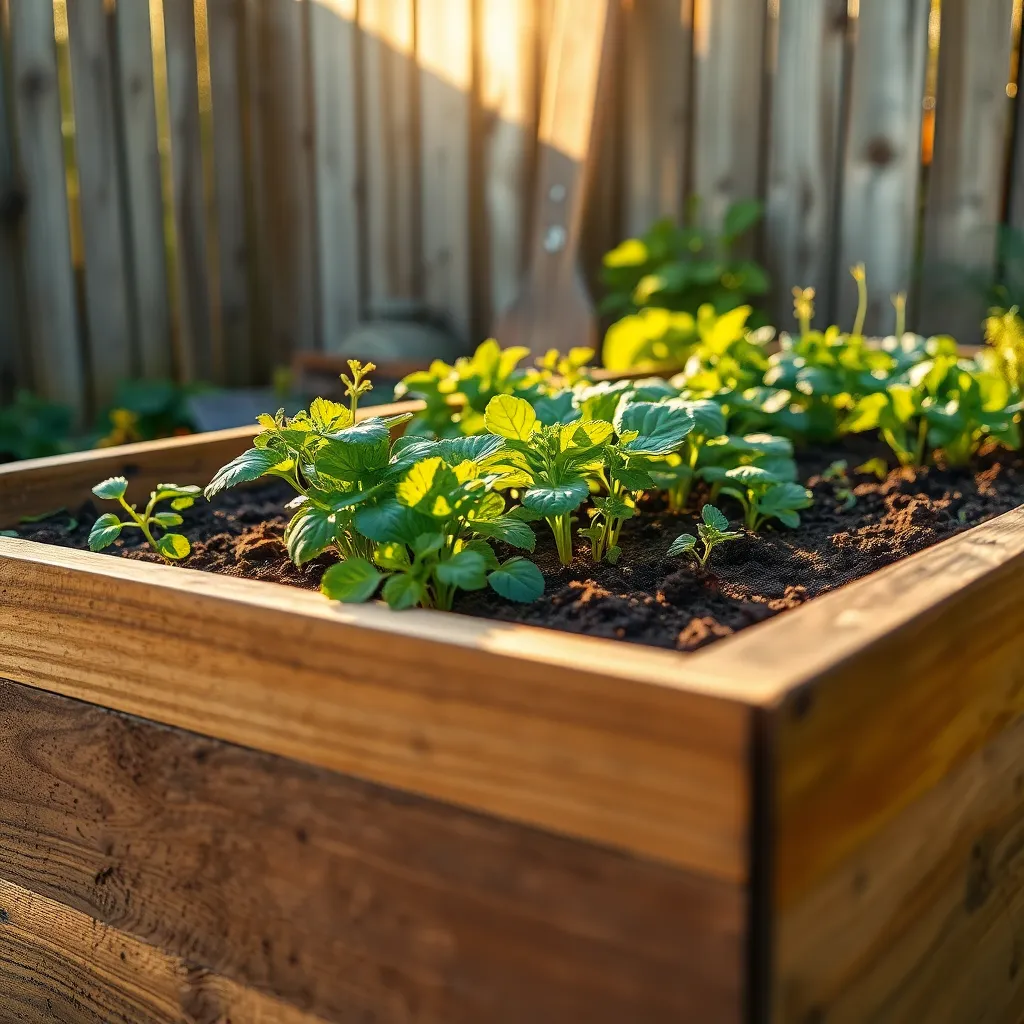
Utilizing geotextile fabric in your raised garden bed offers a dual advantage: it acts as a weed barrier and aids in effective drainage. By laying this fabric at the base of your bed before adding soil, you can significantly reduce the infiltration of weeds from below.
This fabric is typically made from permeable materials, allowing for proper water flow while preventing soil erosion. For best results, choose a non-woven geotextile if your primary goal is drainage, or a woven type for more robust weed prevention.
When installing, ensure the fabric is tightly secured to prevent it from shifting as you fill the bed with soil. Use landscape staples every 12-18 inches along the edges and seams to keep it firmly in place, which will help maintain its effectiveness over time.
For gardeners in areas with heavy rainfall, geotextile fabric can be especially beneficial. It helps in maintaining consistent soil moisture levels by preventing waterlogging, which is crucial for root health.
Corner Brackets (Sturdy Frame Support)
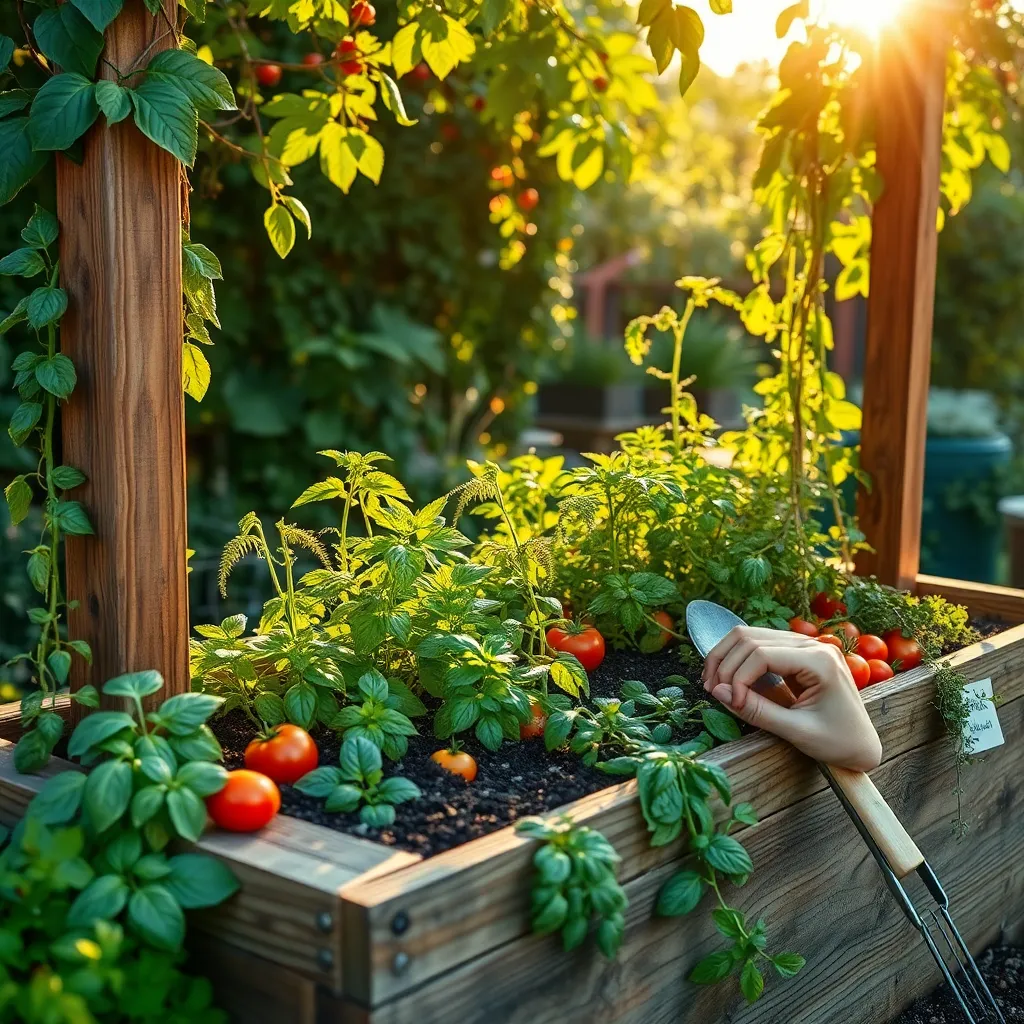
Corner brackets are essential for ensuring your raised garden bed has a sturdy and long-lasting frame. They provide additional support, preventing the corners of your bed from warping or coming apart over time. For beginners, choosing galvanized steel brackets will offer resistance against rust and weather, ensuring durability in various climates. These brackets are easy to install with basic tools, making them an accessible option for any DIY garden project.
When assembling your raised garden bed, place a bracket at each corner to create a strong, square structure. This technique not only maintains the shape of your garden bed but also enhances its overall stability. For those with more experience, consider using brackets with adjustable angles if your design includes non-standard shapes. This allows for creative gardening layouts while maintaining structural integrity.
To install corner brackets, first ensure that your wood is cut to the correct lengths, and the edges are smooth and even. Use galvanized screws to secure the brackets, as these are resistant to rust and will ensure the longevity of your setup. For added strength, use a power drill to drive screws directly through pre-drilled holes in the brackets, providing a firm hold.
Incorporating corner brackets will help your raised garden bed withstand the weight of soil and plants without sagging. This is particularly important if you are using heavy soil mixes, which can exert significant pressure on the bed’s frame. Remember, a well-constructed bed not only supports your plants but also makes maintenance easier and more enjoyable, encouraging a thriving garden.
Square Foot Gardening Grid (Efficient Space Utilization)

Incorporating a square foot gardening grid into your raised bed can maximize space efficiency and boost yield. This method involves dividing your garden bed into a grid of 1-foot squares, allowing for precise plant placement and easy access.
Begin by laying out a grid using string or thin wooden slats to mark each square foot section. This organizational technique not only helps in planning but also makes it simple to manage different plant varieties with varying needs.
Choose soil that retains moisture yet drains well, such as a mix of peat moss, vermiculite, and compost. Regularly monitor soil moisture and water as needed, typically once or twice a week, depending on weather conditions.
For beginners, consider planting easy-to-grow crops like lettuce, radishes, or basil, which thrive well in small spaces. Advanced gardeners might experiment with vertical supports for climbing plants like peas or beans, utilizing every inch of vertical space.
Raised Bed Soil Mix (Optimized Plant Growth)
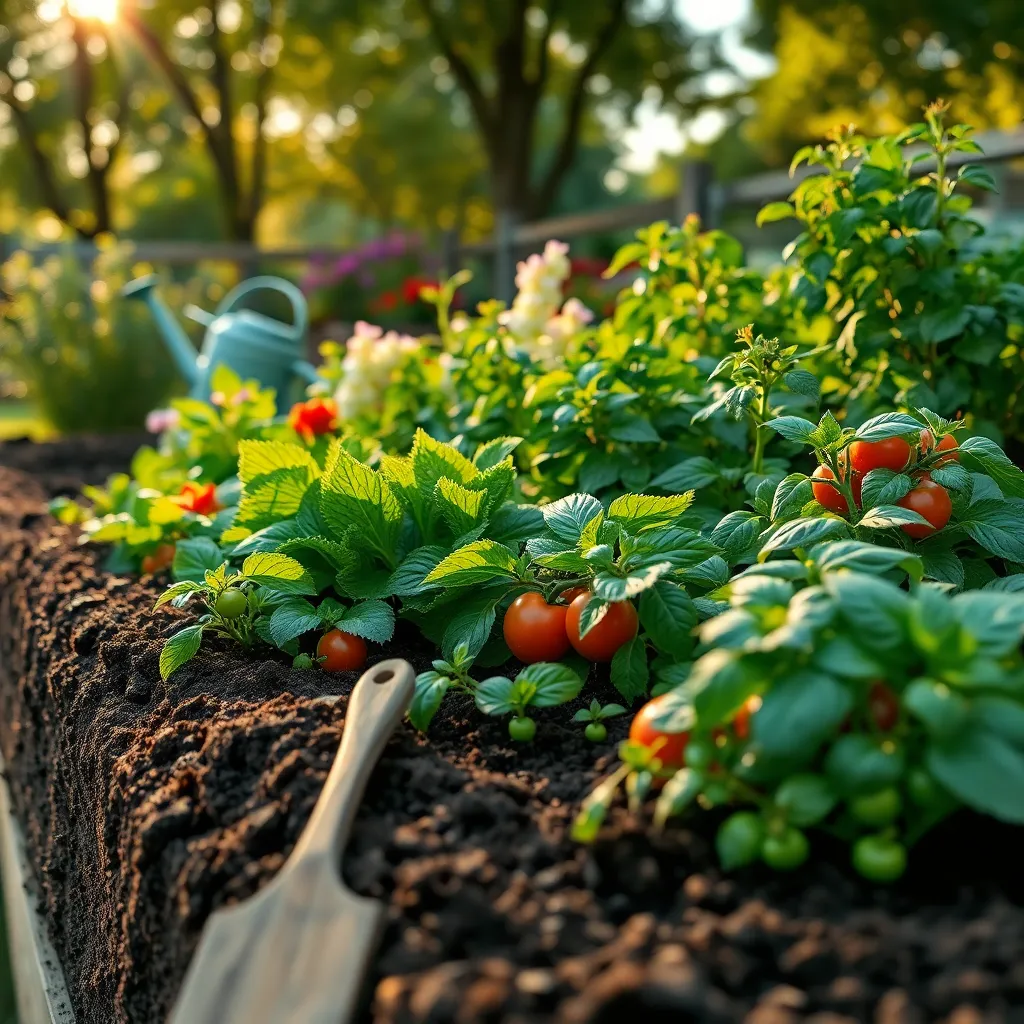
To optimize plant growth in your raised bed, it’s crucial to start with the right soil mix. A balanced mix typically includes one-third topsoil, one-third compost, and one-third soilless growing medium like peat moss or coconut coir.
Topsoil provides the necessary structure and nutrients, making it the backbone of your soil mix. Be sure to choose a high-quality, screened topsoil to avoid weeds and pests that could compromise your plants.
Incorporating compost enriches the soil with organic matter, enhancing water retention and providing essential nutrients. Aged compost is ideal, as it breaks down easily and supports healthy root growth.
Adding a soilless medium like peat moss or coconut coir aids in moisture retention and ensures proper aeration within the soil mix. This component is especially beneficial for areas that experience heavy rainfall or extreme dryness, as it helps maintain a consistent moisture level.
For more advanced gardeners, consider incorporating perlite or vermiculite to further enhance aeration and drainage. These additions can help prevent soil compaction, ensuring that roots have ample space to grow and access oxygen.
Once your soil mix is prepared, water the bed thoroughly to settle the soil and eliminate air pockets. Consistent watering, about 1-2 inches per week, will help maintain optimal moisture levels for plant growth.
Self-Watering Reservoir (Consistent Moisture Control)
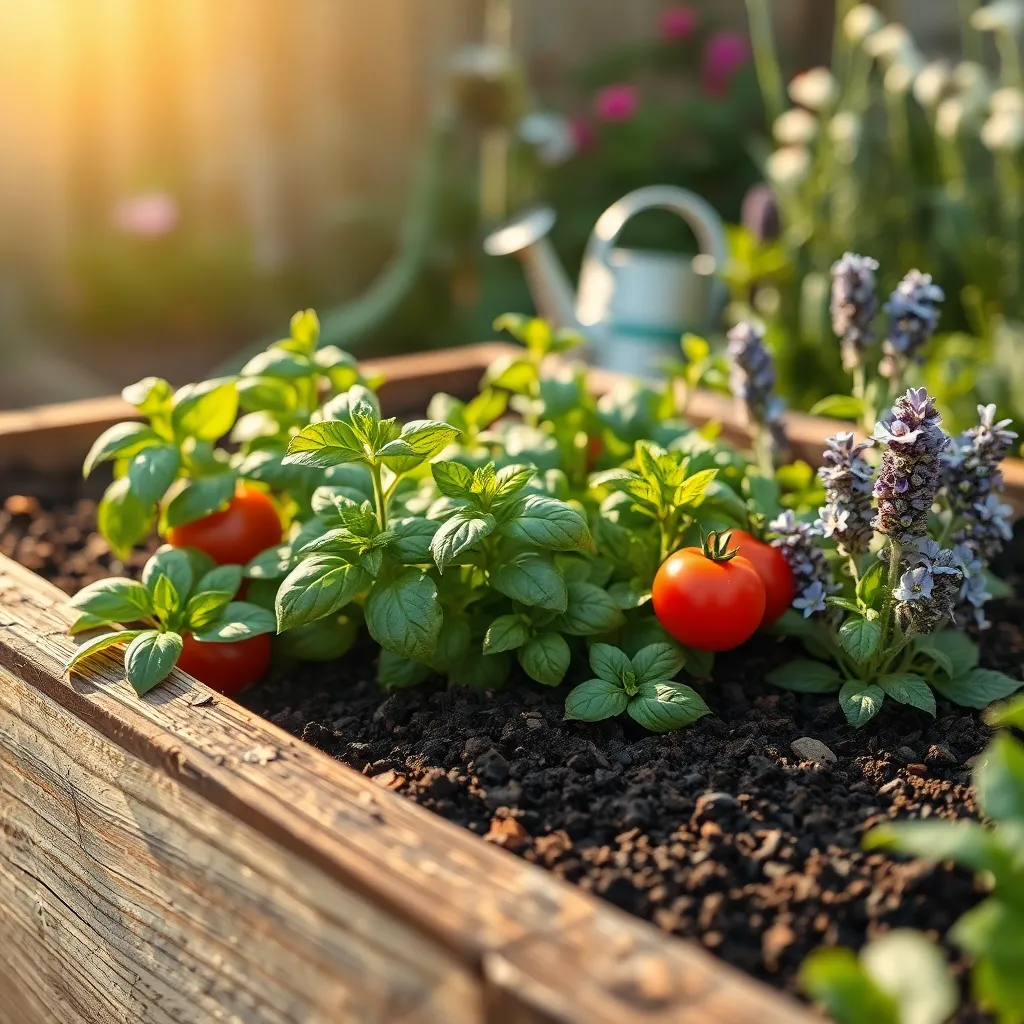
When constructing a raised garden bed, incorporating a self-watering reservoir can be a game-changer for consistent moisture control. This system helps ensure your plants receive a steady supply of water, which is crucial for healthy growth, especially during dry spells.
To create a self-watering reservoir, you can use a simple setup with a water storage container at the base of your raised bed. A perforated pipe or wicking material can be used to draw water from the reservoir to the soil, maintaining an ideal moisture level for plant roots.
It’s important to use a well-draining soil mix to prevent waterlogging, which can be detrimental to your plants. Consider using a blend of peat moss, perlite, and compost to promote aeration and moisture retention.
For beginners, regularly check the water level in your reservoir to ensure it doesn’t run dry, especially during hot weather. Advanced gardeners might opt for adding a float valve system to automatically refill the reservoir when needed, reducing the need for frequent manual checks.
Cold Frame Add-On (Extended Growing Season)
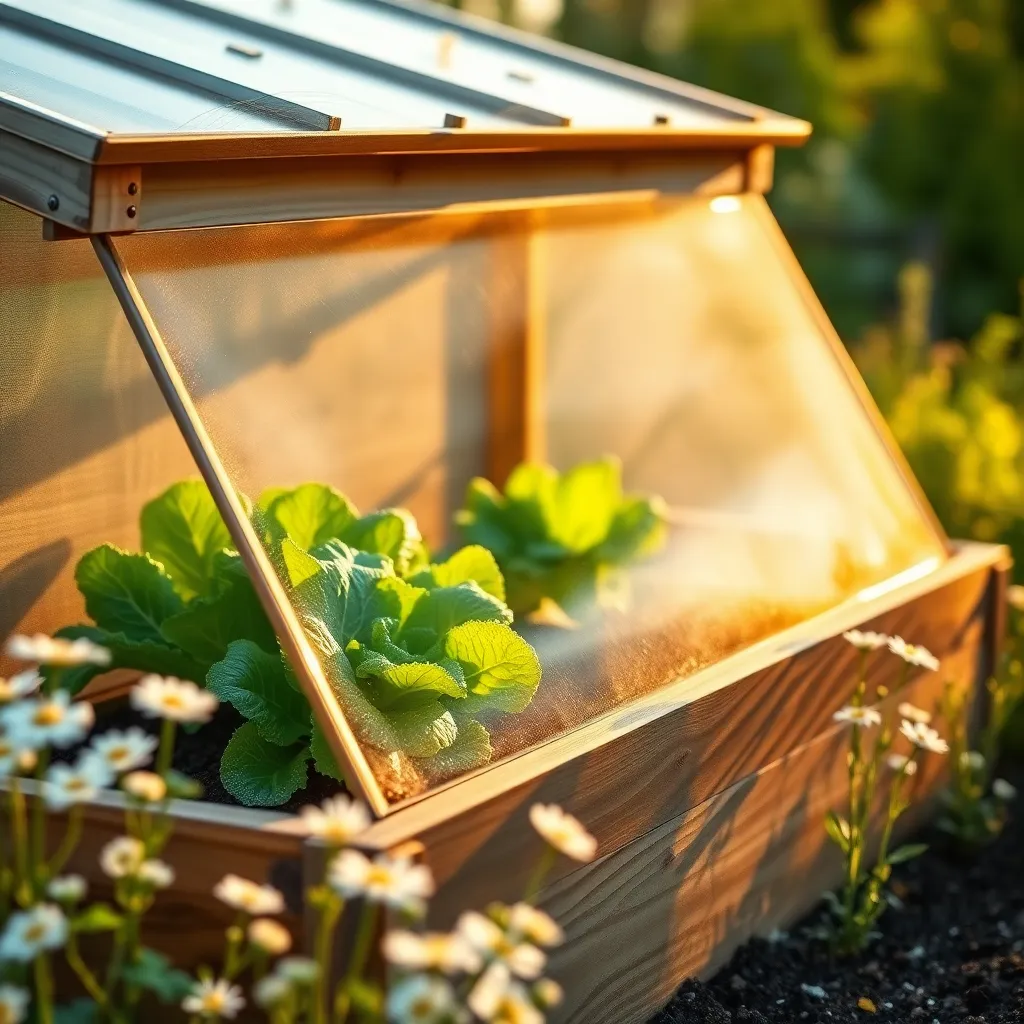
Adding a cold frame to your raised garden bed is an excellent way to extend your growing season. This simple structure traps heat from the sun and insulates your plants, allowing them to thrive in cooler temperatures.
To build an effective cold frame, you need sturdy materials like wood for the frame and a transparent cover, such as old windows or polycarbonate sheets. Ensure that the cover is angled to maximize sunlight exposure and facilitate water runoff.
Beginner gardeners will find cold frames useful for starting seeds early in the spring or growing leafy greens well into the fall. More experienced gardeners can use them to overwinter hardy herbs, such as thyme and sage, providing fresh ingredients year-round.
For optimal results, monitor the temperature inside your cold frame using a simple thermometer. On sunny days, ventilate by propping open the cover slightly to prevent overheating, and close it during cold nights to conserve warmth.
Recycled Plastic Lumber (Eco-Friendly Construction)
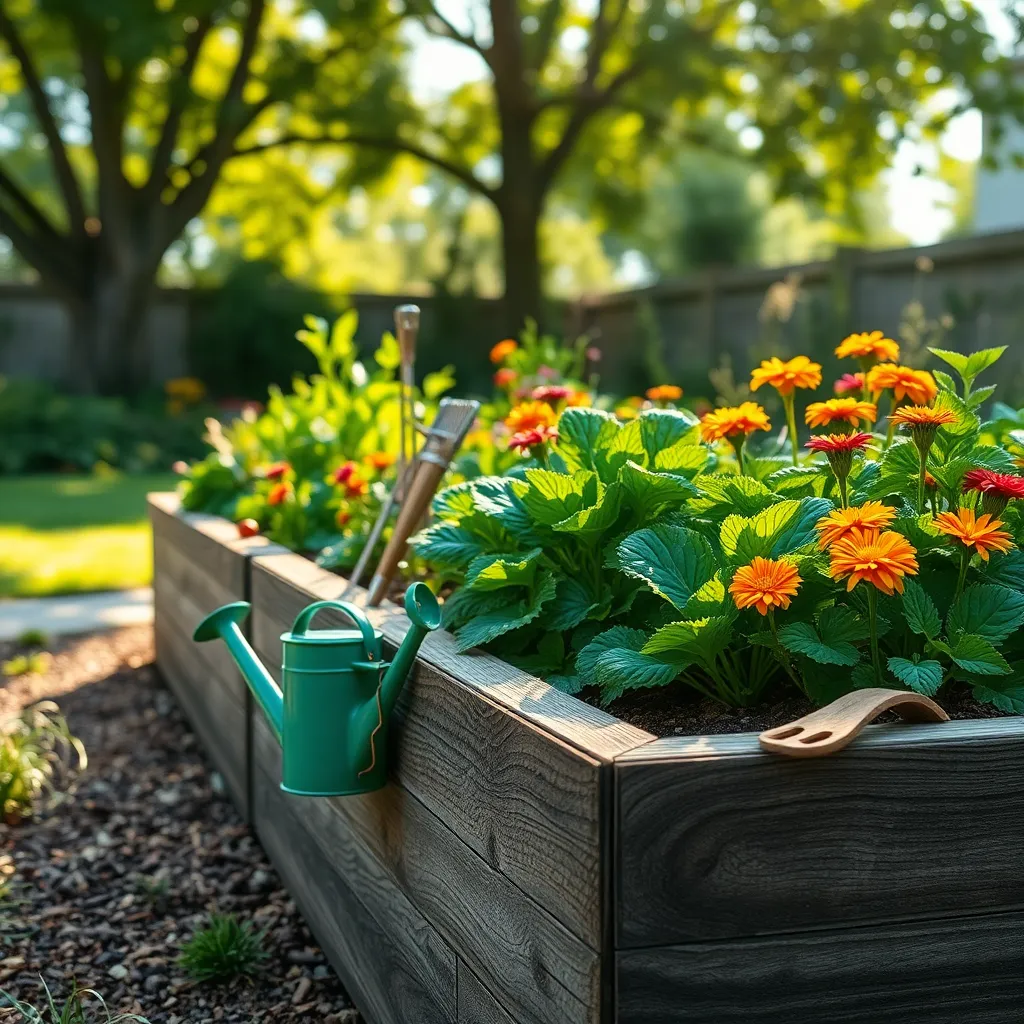
Recycled plastic lumber is an eco-friendly option for constructing raised garden beds, offering durability and sustainability. This material is resistant to rot, insects, and moisture, making it an excellent choice for gardeners looking to build long-lasting structures.
Opting for recycled plastic lumber not only supports sustainable practices but also reduces the environmental impact associated with traditional wood. It’s available in various colors and sizes, allowing gardeners to customize their beds to fit their garden aesthetics.
When constructing a raised bed with recycled plastic lumber, ensure that the bed is at least 12 inches deep to accommodate root growth for most vegetables. For optimal plant health, fill the bed with a mix of 60% topsoil, 30% compost, and 10% perlite or coarse sand to improve drainage and aeration.
Watering needs may vary, but a general rule is to check soil moisture regularly and water deeply when the top 2 inches of soil feel dry. Consider installing a drip irrigation system within the bed to provide consistent moisture and minimize water waste.
Conclusion: Growing Success with These Plants
In nurturing a thriving relationship, much like tending to a raised garden bed, the foundation is everything. This article explored ten essential concepts: understanding each partner’s needs, cultivating open communication, setting healthy boundaries, fostering mutual respect, practicing forgiveness, maintaining a sense of humor, investing quality time, showing appreciation, embracing change, and committing to growth together. Each step is a building block toward a resilient partnership that flourishes over time.
As an actionable next step, identify one concept you feel could use more attention in your relationship. Discuss it with your partner and create a small, achievable goal to work on together this week. This proactive approach not only strengthens your bond but also demonstrates your commitment to nurturing your relationship.
Remember, relationships are an ongoing journey. Bookmark or save this article to revisit these principles whenever you need guidance or inspiration. By continually investing in these tenets, you pave the way for a relationship grounded in love and mutual understanding.
Looking forward, know that with dedication and effort, your relationship can grow into a fulfilling partnership that stands the test of time. Empower yourselves with these tools, and watch your connection blossom.

